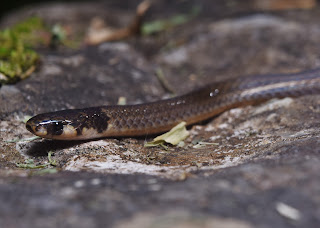In 1997, John Murphy's book covered an account of the amphibians and reptiles of Trinidad and Tobago; the only one at the time covering both amphibians and reptiles of the country. Two decades later, this first field guide edition to the herpetofauna of the country was published which provides an update on its predecessor. It features updated information on species, along with name changes and some new species. The book was published by the Trinidad and Tobago Field Naturalists' Club (Founded 1891) and can be bought locally in most leading bookstores as well as internationally from the club's website, see link here. To date, international orders for the field guide have come from the US, UK, Germany, France, Israel, Sweden, and Guadeloupe.
Two international reviews have come out for the book this year. One in The Herpetological Bulletin, and one in Herpetological Review. The following are some direct comments from the reviews:
Suzanne Simpson, Hadlow College, Hadlow, Tonbridge, Kent, TN11 0AL, UK.
Herpetological Bulletin 144, 2018: 34-35.
"This field guide is a user-friendly, detailed, step-by-step guide to the
herpetofauna of Trinidad and Tobago. It breaks down into multiple sections with
an easy to use index at the back for readers who want to just look at a few
species. Anyone interested in amphibians and reptiles could pick up this book
and enjoy the pictures and information. At the price it is excellent value for
money."
Robert Powell, Department
of Biology, Avila University, Kansas City, Missouri 64145, USA
Herpetological Review 2018, 49(3) 561-563.
"This is an outstanding, educational, and entertaining overview of a
complex insular herpetofauna. Sufficiently detailed and documented to meet the
needs of professionals but adequately straight-forward and not too technical to
serve readers using it solely as a means to identify species they encounter
during a visit to the islands. This excellent guide is a must for the libraries
of herpetologists with an interest in insular herpetofauna and for the
backpacks of any naturalist fortunate enough to experience Trinidad and Tobago."
Cost to order online is $42. USD ($290. TTD) which includes the cost of postage. For further information on how you can order a copy, please email admin@ttfnc.org. For local purchases, contact the club for additional information.
Citation for the Field guide:
Murphy, J.C., Downie,
J.R., Smith, J.M., Livingstone, S.R., Mohammed, R.S., Auguste, R.J., Lehtinen,
R.M., Eyre, M., Sewlal, J.N., Noriega, N., Casper, G.S., Anton, T., Thomas, R.A.,
Rutherford, M.G., Braswell, A.L., and Jowers, M.J. 2018. A field guide
to the amphibians and reptiles of Trinidad and Tobago. Trinidad and Tobago Field Naturalists’ Club.
336 pp.
























